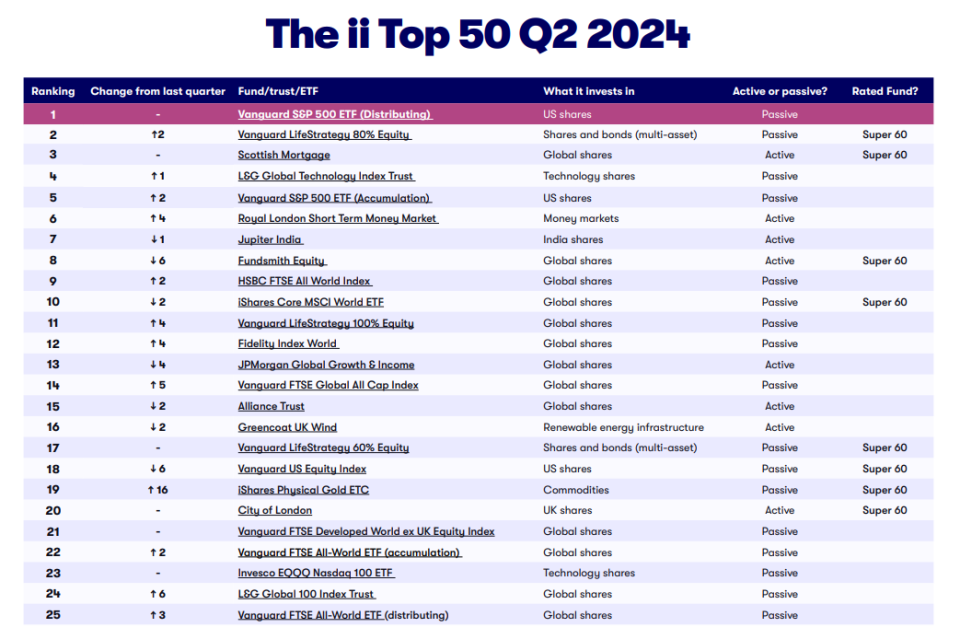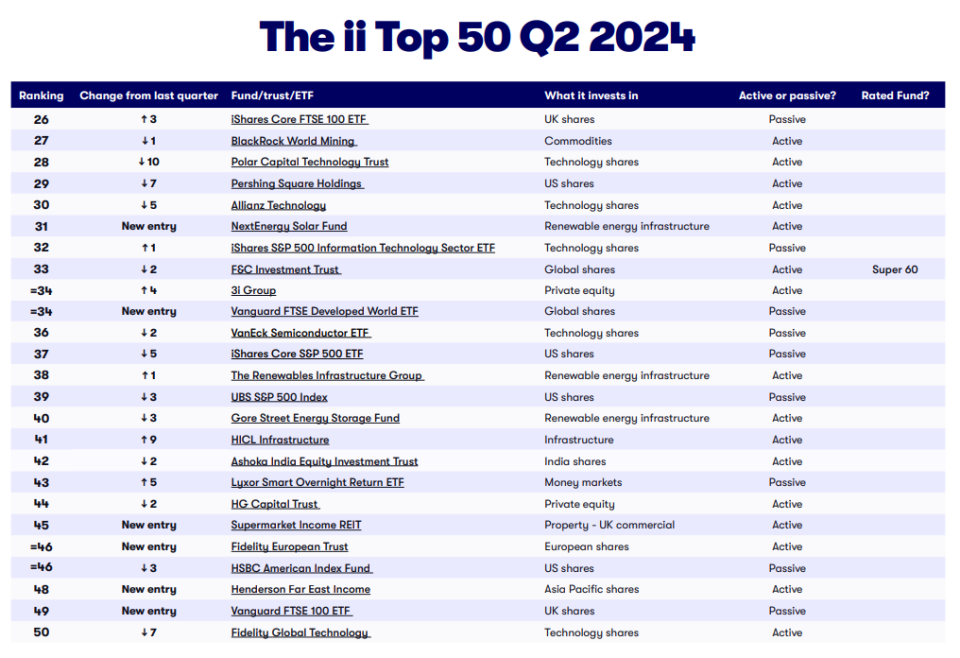
Investors are going global and targeting tech with most of the popular funds at investment platform Interactive Investor focusing on technology shares.
The UK’s second largest investment platform for retail investors has launched an investment barometer, which ranks the most-popular funds, investment trusts, and exchange-traded funds (ETFs) each quarter.
Many investors are increasingly seeking focused exposure to the US technology sector. This trend is highlighted by the fact that seven of the top 50 investment funds are specifically targeting the tech industry.
While the risk of late entry into a trending sector remains, investors are betting on the longevity of artificial intelligence (AI) as a pivotal growth driver in the years ahead.
Of these seven technology-focused funds, three are actively managed. Investors in these funds place their confidence in professional stock pickers to identify and capitalise on the best opportunities within the tech landscape. Notably, two of these actively managed funds are investment trusts currently trading at a discount, offering investors the opportunity to acquire tech stocks at attractive valuations.
Read more: How to invest in AI as the rally continues
The remaining four funds are passively managed, delivering returns linked to the performance of technology company indices. It’s important for investors to note that these passive funds often have significant weightings in the largest tech stocks. Consequently, any downturn in tech performance can heavily impact overall returns.
Assessing the top 10 holdings of these funds can provide a quick and revealing snapshot of potential concentration risks, ensuring that they are not overly exposed to any single segment of the market.
Investors are also favouring a global approach rather than seeking funds that invest in a specific region. Nearly one in three (15) funds in the Interactive Investor Top 50 Fund Index invest in global shares.
The US market is the second-most popular region, with seven funds featuring. Lower down the list, the UK has only three funds, India has two, and Europe and Asia Pacific one each.
A global approach also means that investors, particularly those in index funds or ETFs, will gain exposure to the US technology giants, which have delivered strong returns for more than a decade with shares accelerating again at the start of 2023.
“While going global provides exposure to US tech, many investors also want dedicated technology exposure, reflected by seven of the top 50 funds investing in the sector. While there’s always the danger of identifying a theme late in the day, investors are positioning for artificial intelligence (AI) to remain a key trend for years to come,” Kyle Caldwell, funds and investment education editor at Interactive Investor, said.




The Vanguard S&P 500 ETF (VOO) has emerged as the top pick among investors, underscoring the trend towards cost-effective exposure to global markets. The Vanguard S&P 500 ETF (Accumulation), ranked fifth, provides low-cost access to the world’s most widely covered stock market, with an annual fee of just 0.07%, equating to £7 on a £10,000 investment.
In second place, the Vanguard LifeStrategy 80% Equity fund (VNGA80.MI) appeals to both novice and seasoned investors. This fund is one of five in the LifeStrategy range, all of which are favoured for their low costs and diversification benefits, making them ideal “core” choices for diversified portfolios.
Scottish Mortgage (SMT.L), occupying the third spot, invests in a mix of global businesses, including up to 30% in private companies leveraging technological advancements. This unique approach offers investors exposure to cutting-edge innovation across various sectors.
The rest of the top 10 features a mix of passive and actively managed funds, with a strong focus on global and technology stocks.
Read more: How to invest in the Indian stock market
Among the passive options are the L&G Global Technology Index Trust (0P0000XAFS.L), HSBC FTSE All World Index (0P000159KA.L), and iShares Core MSCI World ETF (SWDAM.XD), all of which provide broad, diversified exposure to international markets.
Three actively managed funds also make the top 10 list. The Royal London Short Term Money Market (0P0000NRQO.L) fund attracts investors with its 5% yield, achieved through investments in low-risk segments of the bond market. Jupiter India (0P00018LFD.L) is gaining traction due to optimism about India’s business-friendly reforms and favourable demographics driving long-term growth. Lastly, Fundsmith Equity (0P0000RU7Y.L), managed by Terry Smith, continues to be a popular choice for its concentrated portfolio of high-quality global stocks known for their consistent long-term performance.
A simple way to understand the difference between active and passive is to think of active managers as trying to uncover needles (good shares) in a haystack (the market). Passive funds, meanwhile, buy the whole haystack, knowing that the needles are in there somewhere.
Investment trusts, however, dominate the list far more significantly than traditional funds, with 20 investment trusts making the cut compared to just four funds.
Read more: Stocks to watch this week: Tesla, Microsoft, Alphabet and Amazon
The unique structure of investment trusts offers several advantages to private investors. These include the potential to purchase shares at a discount to net asset value (NAV) and the presence of revenue reserves, which enable many investment trusts to maintain long-term records of dividend growth year after year.
Passive funds are broadly categorised into index funds and ETFs. The key distinction between the two lies in their trading capabilities: unlike index funds, ETFs can be bought and sold throughout the day on the stock market, much like individual stocks. For long-term investors, this difference is largely negligible. Nonetheless, there appears to be a slight preference for ETFs, with 14 ETFs compared to 12 index funds in the latest rankings.
“Currently, there are plenty of investment trust discount opportunities,” Caldwell said.
“The renewable energy infrastructure sector is one where some investors have looked to take advantage of big discounts, hoping it will return to form having been negatively impacted by rising interest rates. Four trusts from that sector feature in the ii Top 50: Greencoat UK Wind (UKW.L), NextEnergy Solar Fund (NESF.L), The Renewables Infrastructure Group (TRIG.L), and Gore Street Energy Storage Fund (GSF.L),” he added.
Download the Yahoo Finance app, available for Apple and Android.






